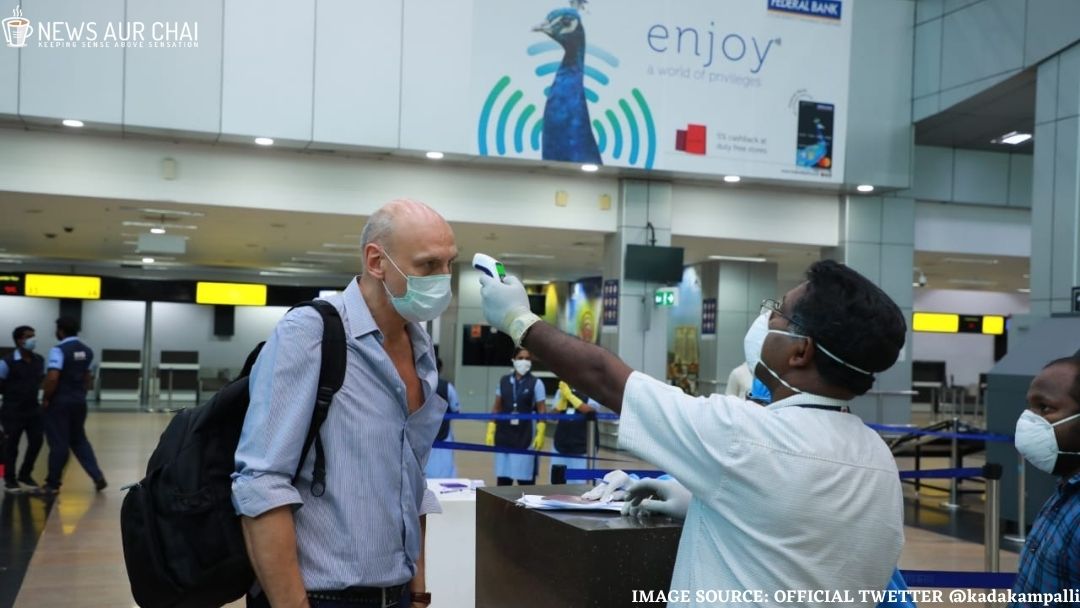
When the daily rise in cases hit the 1000-mark in Kerala on Wednesday, the Chief Minister, Pinarayi Vijayan announced that the government would seriously consider imposing a lockdown again, according to a news report by the New Indian Express.
As per the report, CM had announced in a recent press conference that out of the 1,038 new cases, 785 of them were due to local transmission, and currently, over 8,800 people were tested positive. Out of the affected number, nine of the patients were placed on ventilator support, while 53 of them were in the ICU. He added that over 100 infected patients came were from other states, and 87 of them were from abroad.
July 22 | #COVID19 Update
1038 new cases reported.
272 recoveries.
1 death.👥 1,59,777 under observation.
🧪 A total of 5,88,930 samples collected across all categories for testing.
📍397 hotspots.NB: Active count doesn't include those who relocated to other states. pic.twitter.com/TnbLET5LET
— CMO Kerala (@CMOKerala) July 22, 2020
In the previous week, the head of state announced that community spread had affected two coastal areas in the state with its capital Trivandrum in a grave situation, as stated in a Scroll news story.
When Kerala COVID hit ‘Zero mark’
The first-ever case of coronavirus in India was believed to have occurred in Kerala, from a student who had returned from Wuhan, China. The state was declared a hotspot in March, with a rapidly rising number of cases. However, through sustained efforts, the ‘God’s own country’ reported to have brought the number of infections to zero by May.
By using the method of ‘Test, Trace and Isolate’, and by implementing the grass-root level planning, the state had slowly flattened the curve to witness certain days when there were absolutely no reports of positive cases anywhere.
267 international tourists returned to London from Trivandrum/Kochi today.7 of the tourists were earlier tested positive for Covid 19& recovered while in Kerala. The govt has conducted medical tests before travel.
The repatriation is facilitated in coordination with the UK govt. pic.twitter.com/ILOWVaQfgi
— Kadakampally Surendran (@kadakampalli) April 15, 2020
However, these efforts did not lead to long term results- as is evident from the recent surge in infections.
Rapid Rise in Infections
As stated in a recent BBC report, many experts attribute the rapid rise in infections to the massive influx of over half a million citizens from the Gulf and other states within India returning to their homeland. Most of these people were part of the workforce, since over 17 per cent of the youth population works outside the state. Out of the 8,000 and odd cases reported so far, over 7,000 of them have a travel history.
This has led to the second possible cause is the rise of cases- community transmissions. With so many infected people entering the population, even places that previously did not have persons with travel history have begun to show a surge in the number of cases.
Below is a tweet by covid19indiaorg, a volunteer-driven, crowdsourced tracker for Covid19 cases in India, on July 15, wherein it is clearly shown that the spike in number is due to the local transmission which has risen because of the imported cases.
Spike in Kerala and the rise in locally transmitted cases.
This graph looks at how the source of infection has moved from imported cases to local cases in Kerala, contributing to the recent spike in the state.
Detailed commentary in the graph. pic.twitter.com/LklqeBnybY
— covid19indiaorg (@covid19indiaorg) July 15, 2020
Another reason might be the improper implementation of social distancing norms. Coastal villages like Poonthura, which is one of the two villages reported to have witnessed community transmission have seen a spike due to a few of the villagers visiting a fish market.
Despite the increase in the number of tests being conducted in the state and all over the country, it seems nearly impossible to carry the large number required. Other states like Andhra Pradesh have also reported an increase in the number of cases while Manipur has announced a seven-day lockdown starting today.
As of July 23, India has seen over a million positive cases with over 29,000 deaths and approximately 7.8 lakh recoveries. Maharashtra continues to lead the top-three affected states, with Tamil Nadu as the second and Delhi a close third on the list.
A lot of South Indian states are beginning to make the top-five list, with Andhra Pradesh now overtaking Gujarat as the fifth most affected, preceded by Karnataka in the fourth place.





